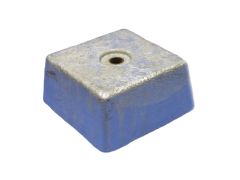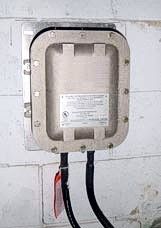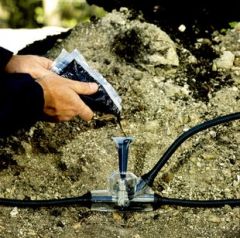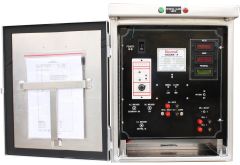Scotchkote 226P Epoxy Patch Sticks, 5 lb. Box, by 3M
Description
3M Scotchkote Hot Melt Patch Compound 226P is a heat bondable polymeric coating in stick form designed for plant and field repair of Scotchkote Fusion Bonded Epoxy Coatings. Scotchkote Hot Melt Patch Compound 226P is ideal for repairing minor pinholes and abrasions. Scotchkote 226P is colormatched to Scotchkote 226N and Scotchkote 6233.
Scotchkote 226P can be used on holidays up to 2 mm in diameter. The following 3M two-part epoxies should be used for bare steel areas larger than pinholes, depending on the functional and application properties required:
Scotchkote 323 and 323+
Scotchkote 323i
Scotchkote 352
Scotchkote 327
Features
- Easy to apply
- Usable in all weather conditions• Quick setting for immediate installation and handling• No solvents
- No mixing, metering, or pot life problems
- Flexible
- Color matched to Scotchkote fusion bonded epoxy coatings
- Maximum operating temperature 131°F/55°C
- Patch sticks are recommended to repair pin holes, however they can be used to repair other coating defects at the discretion of the end user
| Properties |
| Property | Value |
|
Color |
Blue-green |
|
Mix Ratio |
2A to 1B by volume, 70.8% to 29.2% by weight |
|
323 Viscosity @ 72°F / 22°C |
|
|
Shelf Life |
24 months |
|
Specific gravity |
1.35 mixed |
|
Coverage |
142 sq ft / lb / mil (0.74 m2 / kg / mm) |
|
Maximum Operating Temperature |
|
|
Minimum Coating Thickness |
25 mils / 635 microns recommended |
| Typical Test Properties |
| Property | Test Description | Typical Value |
|
Shyodu Gel Time |
200 gm mass |
75°F / 24°C: 18 min |
|
Dry to Touch Time |
ASTM D1640 |
41°F / 5°C: 7 hrs |
|
Approximate Back Fill Time |
ASTM D1640 |
41°F / 5°C: 8 hrs |
|
Cathodic Disbondment |
CSA Z245.20-02 |
149°F / 65°C, 3.5V, 24 hrs, 4.9 mmr |
|
Adhesion of Coating |
CSA Z245.20-02 |
203°F / 95°C, 24 hrs, Rating 1 |
|
Flexibility |
CSA Z245.20-02 |
68°F / 20°C, 0.7, °/PD |
|
Abrasion Resistance |
ASTM D4060-95 |
0.325 g loss |
|
Impact Strength |
ASTM G14 |
323 = 73.6 inch-lbs (8.3 joules) at 75°F / 24°C |
|
Impact Resistance |
CSA Z245 20-98 |
See chart below. |
| Impact Resistance (Impact value is the last Joule where three impacts have passed) |
| Panel Number |
Test Temperature |
Joule Value |
Holiday Detection Volts | Average DFT (mils) |
| 1 2 3 4 5 6 7 8 |
-40°F / -40°C -22°F / -30°C 14°F / -10°C 32°F / 0°C 68°F / 20°C 122°F / 50°C 149°F / 65°C 176°F / 805°C |
1.5 1.0 1.5 1.5 2.75 2.5 4.0 3.5 |
2500 2500 2500 2500 2500 2500 2500 2500 |
30.4 24.5 27.2 25.0 26.9 27.7 27.0 26.3 |
266P Hot Melt Patch Compound 226P
General Application Steps
- Roughen the surface of the parent FBE coating using 80-mesh to 120-mesh sandpaper. Clean the surface and wipe away the sanding residue with a non-contaminating cloth.
- Preheat the parent-coating surface using a noncontaminating heat source, such as portable hand-held butane torch. Heat should be applied in a manner that avoids burning or charring of the epoxy coating. Slight browning of the parent coating is acceptable, but charring or blistering is not. Avoid heat application directly to the patchstick while prewarming the coating surface.
- While continuing to heat the FBE surface, occasionally draw the patchstick across the repair area until it leaves a residue. Then rub the stick in a circular motion and utilize the torch to help melt it and maintain the pipecoating temperature. Continue until the patch is smooth and has a thickness of at least 15 mils (380 microns) greater than the parent coating.
- Allow the patch to cool before handling.






